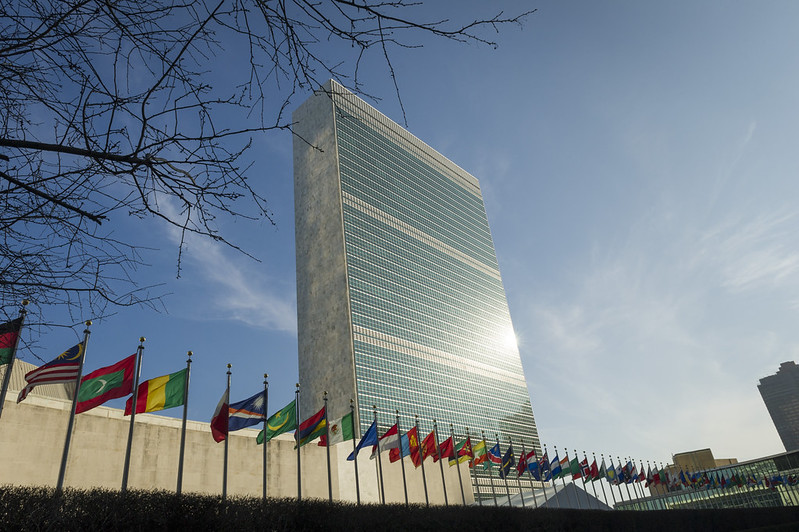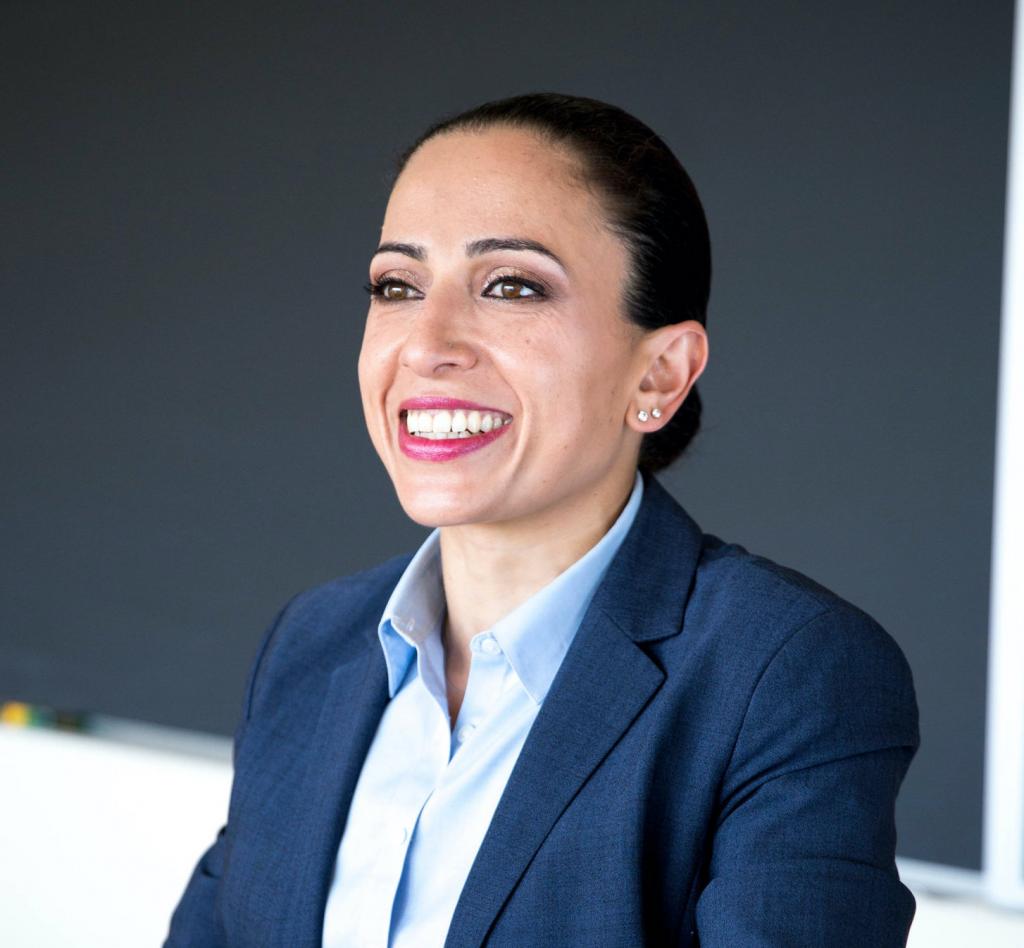Counterterrorism and Humanitarian Action: Will 2020 Be a Turning Point for International Humanitarian Law at the United Nations?
Harvard Law School Program on International Law and Armed Conflict has released a new briefing on an emerging debate: Can and should a U.N. counterterrorism body authoritatively interpret and assess compliance with international humanitarian law?

Published by The Lawfare Institute
in Cooperation With

A debate is emerging slowly at the United Nations headquarters: Can and should a counterterrorism body authoritatively and authentically interpret and assess compliance with international humanitarian law (IHL), the principal body of law regulating armed conflicts? At first glance, that debate might seem merely niche or technocratic—one fast-tracked to the annals of international law pedantry. But when viewed in its proper context, the debate raises several concerns that may have cascading effects of great significance. Indeed, how it is ultimately resolved may entail consequences for safeguards for populations ravaged by armed conflict as well as the integrity and coherence of the system of legal protection in war. Along with our co-author, Jessica S. Burniske, we examine these issues in a new briefing for the Harvard Law School Program on International Law and Armed Conflict.
It is difficult to recall a more pressing moment in recent history for a robust regime of humanitarian response. An appeal issued in late 2019 by the U.N. Office for the Coordination of Humanitarian Affairs (OCHA) estimated that nearly 168 million people—representing one in about 45 people in the world—will need humanitarian assistance and protection in 2020. That was already the highest figure in decades before the outbreak of COVID-19, the respiratory disease caused by the novel coronavirus. Early signs indicate that the COVID-19 pandemic seems likely to significantly increase humanitarian needs around the world, including in communities devastated by war. The vast majority of situations identified by OCHA as needing humanitarian and protection response are categorized under international law as armed conflicts and are therefore regulated at the international level principally by IHL, which is also known as the law of armed conflict.
Meanwhile, in mid-March, the Security Council largely went into operational abeyance due to concerns around COVID-19. But despite some delays, multilateral policymaking on counterterrorism matters, including at the Security Council, seems likely to continue in the coming weeks (including by videoconference).
In recent decades, humanitarian efforts to alleviate suffering in war have coincided with a surge in counterterrorism mandates at the international, regional and domestic levels. Not least, beginning in 2001 the U.N. Security Council decided that all states must ensure both that any person who participates in supporting terrorist acts is brought to justice and that such terrorist acts be established as serious criminal offenses in domestic laws and regulations. Yet in doing so the Security Council has refrained from adopting a definition of prohibited terrorist acts and has further diluted the precise contours of illegitimate conduct by introducing another ambiguous concept: violent extremism. In the absence of sufficiently precise and legally grounded definitions, several states have in effect criminalized certain activities underlying humanitarian relief and protection efforts, even where those activities are covered by IHL. This “criminalization” of humanitarian action has occurred against a broader trajectory in which several states’ responses to terrorism have implicated other IHL categories in practice as well; consider, for example, notions of combatancy, prisoner-of-war status and membership in non-state parties.
The thumbnail version of the specific tension that has arisen concerning humanitarian action is that a rationale underlying those counterterrorism frameworks presumes that impermissible “support” to terrorism is fungible and always unlawful and that certain humanitarian organizations might function (if unintentionally) as conduits for such support. That support is broadly conceived in some instances to include—in relation to designated actors and communities under their de facto control—such things as the provision of medical care and training on respect for IHL. Humanitarian organizations such as the International Committee of the Red Cross (ICRC) have been warning, at least since 2011, that some counterterrorism measures may imperil emergency relief and protection efforts and reflect a lack of respect for humanitarian principles underlying IHL. Researchers—including at our program, as well as from OCHA, the Norwegian Refugee Council, the Humanitarian Policy Group, the Charity and Security Network, the International Peace Institute, the University of Essex and Chatham House—have documented and analyzed several concerning intersections between counterterrorism frameworks and humanitarian action. Recent initiatives by states—including Germany, Mexico and Switzerland—have sought to raise these issues for more sustained consideration by governments.
Until recently, intersections between counterterrorism measures and humanitarian action received relatively little attention in multilateral instruments. Nevertheless, the U.N. General Assembly included a provision about these issues in the 2016 U.N. Global Counter-Terrorism Strategy Review, and that provision was retained in the 2018 version.
The U.N. Security Council took some initial steps on these issues last year. In Resolution 2462 (2019), the Security Council, acting under its Chapter VII authority, demanded that member states ensure that all measures taken to counter terrorism comply with their respective obligations under IHL. In Resolution 2482 (2019), the Security Council, building on a similar provision in Resolution 2462, urged states to take into account the potential effects of counterterrorism measures on exclusively humanitarian activities, including medical activities, that are carried out by impartial humanitarian actors in a manner consistent with IHL. From our research and consultations, it appears that, so far, the vast majority of states—and indeed the Security Council itself—have not elaborated a position on what exactly these provisions require and might otherwise mean for the implementation of IHL in counterterrorism contexts that also qualify as armed conflicts.
Enter the U.N. Counter-Terrorism Committee Executive Directorate (CTED). In 2004, the Security Council established CTED as a special political mission to enhance the ability of the Counter-Terrorism Committee to monitor implementation of relevant resolutions and to augment the committee’s capacity-building efforts. In subsequent resolutions, the Security Council expanded the responsibilities of both the Counter-Terrorism Committee and CTED to include the evaluation of individual states’ counterterrorism efforts and the provision of enhanced technical advice for states on their compliance with Security Council counterterrorism mandates. As part of its work, CTED conducts individual country visits, and it uses the findings from those visits as its primary mechanism to monitor the implementation of relevant resolutions.
Policy guidance from the committee to CTED dating back to the mid-2000s contemplates that CTED’s mandate might, “as appropriate,” entail certain IHL-related dimensions. For its first 15 or so years, at least publicly, CTED engaged hardly at all with IHL and humanitarian action. That might have changed last year. In its most recent activities report, CTED indicated that in May 2019 it brought to the Counter-Terrorism Committee the topic of addressing the issues of counterterrorism measures in relation to IHL. The document also stated that in 2020 CTED will report back to the committee on its progress. In addition, CTED issued a questionnaire for states in which it asked what steps (if any) they have taken in order to consider—as the Security Council urged—the potential effects of counterterrorism measures on exclusively humanitarian activities that are carried out by impartial humanitarian actors in a manner consistent with IHL.
Discerning the precise contours of CTED’s mandate—including potentially in relation to IHL—is complicated by the Security Council’s broad language. In Resolution 2462 (2019), for example, the Security Council requested that CTED “strengthen its [that is, CTED’s] assessment process relating to countering the financing of terrorism, including through targeted and focused follow-up visits as complements to its comprehensive assessments and to provide, annually … a thematic summary assessment of gaps identified and areas requiring more action to implement key counterterrorism financing provisions of relevant U.N. Security Council resolutions for the purpose of designing targeted technical assistance and capacity building efforts[.]” The Council further “[r]equest[ed] [the Counter-Terrorism Committee] and [CTED] to hold, within 12 months, a joint special meeting on terrorist financing threats and trends as well as on implementation of the provisions of this resolution[.]” (That meeting was delayed recently due to COVID-19-related concerns.)
Indeed, it is not necessarily clear from the text of Resolutions 2462 (2019) and 2482 (2019) alone that the Security Council intended for the mandate of CTED to expand to include the interpretation and application of possibly relevant aspects of IHL. Nor is it necessarily clear as a matter of international law that the Security Council could endow CTED with such authority. Be that as it may, it has not escaped attention that there is no formal body or forum that could practically fill this IHL-assessment void across relevant contexts. For example, the High Contracting Parties—the legal term-of-art for state parties to the Geneva Conventions of 1949—currently meet regularly only every four years. That said, one of the many possibilities for addressing the interpretation and application of IHL in contemporary conflicts is to convene a conference of interested High Contracting Parties on measures to enforce and ensure respect for those conventions in relation to counterterrorism frameworks.
Interpreting IHL requires different skills and capacities than providing technical assistance on matters such as reviewing anti-money-laundering and other financial regulations and evaluating the implementation of border controls. To assess IHL-related compliance, a counterterrorism entity, such as CTED, would seemingly need to form a position regarding the law, including IHL treaty law and customary IHL, applicable in relation to each relevant counterterrorism situation that (also) qualifies as an armed conflict as defined in IHL. At a minimum, that would entail—for each relevant country assessment—discerning the existence (or not) of a particular armed conflict, the scope and applicability of IHL to it, the classification of that conflict (as international or noninternational in character), and the parties to the conflict. Having undertaken those threshold evaluations, it would then be necessary to turn to the specific primary norm(s) at issue, such as the precise scope of protections concerning impartial medical care, persons deprived of liberty and dissemination of IHL. Those norms, once discerned, would need to be assessed in relation to each relevant factual circumstance.
In short, CTED would need, with respect to each relevant country assessment, to determine whether the state has comported with both the Security Council’s demand to ensure that all measures taken to counter terrorism comply with its obligations under IHL, as well as the Security Council’s decision that all states shall ensure that their domestic laws and regulations establish serious criminal offenses in relation to any person who participates in supporting terrorist acts. On one end of the spectrum, CTED might determine, for example, that a state has contravened its obligations to comply with applicable IHL. For instance, this might arise where a state legislates that the provision of any impartial medical care in territory under the de facto control of a nonstate party to an armed conflict constitutes a criminal offense. On the other end of the spectrum, giving effect to CTED’s IHL positions might involve, with respect to certain other country assessments, a determination that, even in light of the extensive protections for impartial medical care laid down in IHL, a state has not taken sufficient steps to implement counterterrorism mandates. This might arise, for instance, were CTED to assess that a state—by enacting, with a view to the progressive development of IHL, an exemption in that state’s domestic counterterrorism laws for all medical care provided in all armed conflicts—has not satisfied its obligation to ensure that any person who participates in supporting terrorist acts is brought to justice.
Part of what is at stake here concerns the authority—as a matter of sovereignty and in light of applicable international law sources and methodologies—of each state to discern what IHL-related obligations it has undertaken; the scope and applicability of those obligations; and the relationship(s) between those IHL-related obligations and counterterrorism mandates, whether at the international, regional or domestic level. The exercise of this authority includes each state’s interpretation of customary IHL and application of IHL treaty provisions, including with respect to humanitarian action. Another part of what is at stake concerns the possible precedent of endowing a nonjudicial, technocratic security entity with the power to interpret and assess IHL compliance through an institutional counterterrorism lens.
These issues are not resolved. States still have opportunities, including in the ongoing negotiations around the anticipated adoption in June or July of the 2020 version of the U.N. Global Counter-Terrorism Strategy Review, to express their respective views on who does and should assess compliance with IHL. In deciding whether to speak out—either on their own or in collaboration with other governments—or to remain silent, it may be important for states to consider that, absent countervailing state practice and expressions of legal views, CTED might become by default the entity that takes up IHL assessments in this area.






